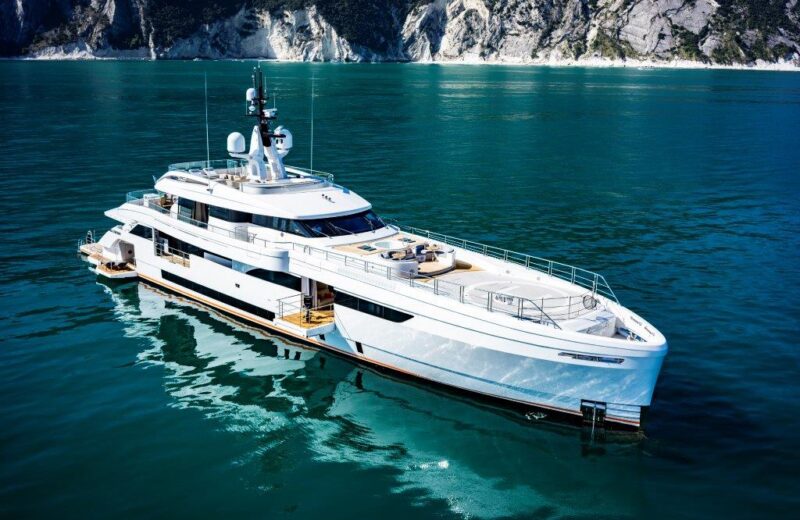OPINION: Green to become the preferred colour of superyacht designs

Superyacht Wider 165 has been fitted with an electric propulsion system; part of the trend towards greener fuels.
What’s the colour of your favourite superyacht? Perhaps the classic white of the 70-metre Nourah of Riyad or, at the other end of the range, the eponymous 106.7-metre Black Pearl? Whatever your colour preference, superyacht designs, at least, are likely to become increasingly green-tinted.
Take, for example, fuels. From January 1, 2020, the International Maritime Organization (IMO) will enforce a 0.5% global sulphur cap on fuel content for areas currently allowing a 3.5% limit. In these areas, all vessels will be required to use fuel with a maximum sulphur content of 0.5%, unless they use exhaust gas cleaning systems. In 2015 the organisation introduced Sulphur Emission Control Areas (SECA), where a maximum sulphur cap of 0.1% in marine fuels was introduced.
So, luxury yacht owners and operators, alongside other vessel managers, will increasingly be encouraged to consider green fuel options, as global environmental regulations tighten. Only this week, renewable-diesel manufacturer Neste revealed plans to introduce later this year a new low-sulphur marine fuel – Neste Marine 0.5 – containing 0.5% sulphur. While this fuel will be suitable only for a small proportion of the world’s superyacht fleet – specifically old conversions from commercial ships – the direction of travel for sulphur emissions is clear.
‘Direction of travel for sulphur emissions’
Responsible superyacht owners and engine manufacturers already specify Automotive Gas Oil (automotive grade) fuel with sulphur content of max 10 mg/kg, a luxury yacht industry insider confirmed to Superyacht Investor.
Could biodiesel be the superyacht fuel of the future for environmentally conscious operators? “Yes”, is the unsurprising answer from Neste, which manufactures 2.7m tons of renewable diesel a year. A spokeswoman for the company told Superyacht Investor this week: “I can see more and more interest towards carbon dioxide emission [CO2] reductions. For luxury yachts, one of solutions existing today could be the use of biofuels, such as Neste MY renewable diesel, produced from waste and residue. This can reduce CO2 emissions by up to 90%.”
But very few yachts and engine manufacturers would consider biofuels at present; due to the microbial growth which they can harbour. This prompted our industry insider to comment: “The diesel bug can rapidly take over a tank and shut down all fuel systems, therefore, engines are tuned to hydrocarbon product.” Clearly, there’s a challenge to design engines and fuel systems that can handle biodiesel more efficiently.
Eco-yachts continue apace
Meanwhile, the rise of the eco-yachts continues apace. Millions of pounds have been invested already in developing technologies – such as catalytic reducers and exhaust scrubbers – alternative fuels – including biofuel, hydrogen gas, hydrogen fuel cells and liquefied natural gas (LNG).
Also, hybrid yachts, with diesel power gensets, battery bank storage and electric motors, are becoming more popular. Earlier this month, Japanese electric motor manufacturer Nidec installed a new power-management system on the superyacht Wider 165. This is said to enable the vessel to cruise for more than four hours at five knots without producing emissions of gas in the air or other substances in the water.
Next month, the latest model of the Silent 55 solar-powered yacht, the S2, from Silent Yachts is to make its debut at the 2019 Cannes Yachting Festival. The 17-metre ocean-going catamaran is capable of 20 knots using silent electric propulsion for unlimited range without noise or fumes and minimal vibration. Power is supplied by a pair of 250 kW e-motors, with a battery capacity of 210 kWh.
So, whatever your preferred colour of superyacht, it is likely that future designs – and a growing number of current ones – will increasingly be tinged green. At least on the inside.

Subscribe to our free newsletter
For more opinions from Superyacht Investor, subscribe to our email newsletter.

